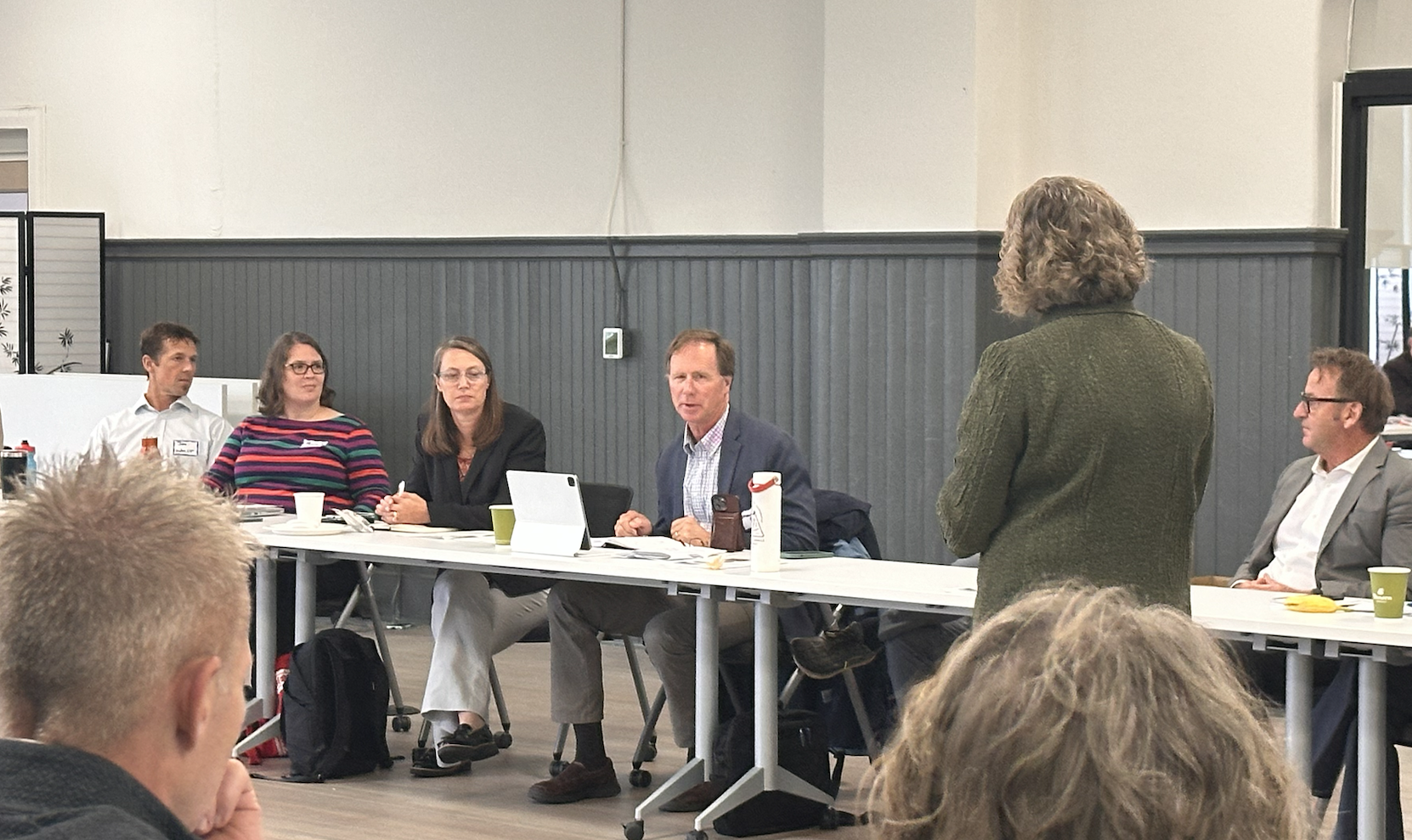Cover Image: Kyle Gray/THROWE ENVIRONMENTAL
Reposted from Anne Arundel County, MD. Originally posted on September 29, 2023.
Pittman’s Pen Weekly Letter: Resilience
“The word resilience is in vogue. We were told we needed it to recover from the stresses of the COVID pandemic, and we’re told we need to build it into our economy, our electric grid, our business plans, and our personal lives. In fact, everything we value should be resilient, so that when it’s threatened it can survive.
As the elected leader of 600 thousand people who live on land called Anne Arundel County between the Patuxent River and Chesapeake Bay, my obligation is not only to defend against direct threats during my eight years in the office. I must also act to prepare for future attacks.
That’s why two days after taking this photo of a flooded City Dock I got on an airplane and flew to Newport, Rhode Island with the director and board chair of our new Annapolis and Anne Arundel Resilience Authority, the organization that was recently awarded $20 million to raise City Dock, restore Jabez Creek, and use dredge material to protect county shorelines.
We spent the next two days with Throwe Environmental – the country’s pre-eminent thinkers on the topic of planning and financing projects that protect public infrastructure from the impacts of climate change – and some thirty peers from Atlantic coastal jurisdictions and military installations, including Annapolis and the Naval Academy.
Military installations were included because they’re in the business of protecting against threats, and they are leaders in this work. We learned all about the Military Installation Resilience work at the Naval Academy and elsewhere, and how essential it is that local governments collaborate in that work. They walked us through the process of identifying assets and assessing how they would fare under various scenarios – things like roads, bridges, water treatment facilities, electric grid, and homes. Things that really matter.
We talked about how to finance projects that prevent damage, whether it be efforts to stop the encroachment of water or reconstruction and relocation of assets. Some of it was borrowed from the world of private finance – putting assets to work in the marketplace to create revenue that has historically been left on the table. It was cutting edge stuff, thinking outside the box by people who have many decades of state and local government experience. I was impressed. Impressed but not sure.
How far do we go? Where does this work fit into other priorities? We have so many current and future challenges to confront, and this one seems so hard.
I even considered for a moment that maybe we were just a group of privileged leaders protecting our assets while families whose paychecks don’t cover rent, healthcare, and food are suffering today because dark money funded politicians and media moguls figured out how to convince the American public that cutting anti-poverty and education programs to pay for tax cuts for the wealthy was a good idea?
Shouldn’t we be addressing the housing crisis, the child care shortage, and the opportunity gap in our schools?
Hell yes. We should.
And that’s where that word resilience is so useful. Resilience is a lens to look at all of our challenges. Resilience is about collective action. Resilience is about confronting – rather than ignoring – threats.
The Anne Arundel County Childcare Summit that I called into on Monday morning was about making families and children and our economy resilient. It was 200 providers, employers, and government leaders from Economic Development, Workforce Development, and the Maryland General Assembly identifying obstacles to expanding affordable childcare, and planning strategies to remove them.
The meeting I had Thursday morning with housing developers asking them to support our forthcoming Essential Worker Housing Access Act was about making our families and our economy resilient.
Governor Moore reminds us that Leave No One Behind is a commitment he learned in the military. That’s not just on the battlefield. The military takes better care of its people than most public and private employers. They get housing, health care, and food. The military also leads our country in combating racism and confronting the impacts of climate change. Pretty forward-thinking folks. They even have a Resiliency Center at Fort Meade.
What’s important about the work we did in Rhode Island was the act of identifying threats and working to prevent them. We were practicing survival, using the tools that every generation of humans inherits from the one before it to ensure that another generation can thrive.
Of course we should make choices about where to spend our limited resources, and of course we should address the suffering that exists today. But if we’re serious about leaving no one behind, about providing housing, childcare, healthcare, and a good education to all of our people, about maintaining the ecosystems that make our planet habitable, reducing the carbon emissions that warm our planet, and protecting the infrastructure that we rely on, we damn well better do our resilience planning and financing now.
Steuart Pittman
Anne Arundel County Executive”

